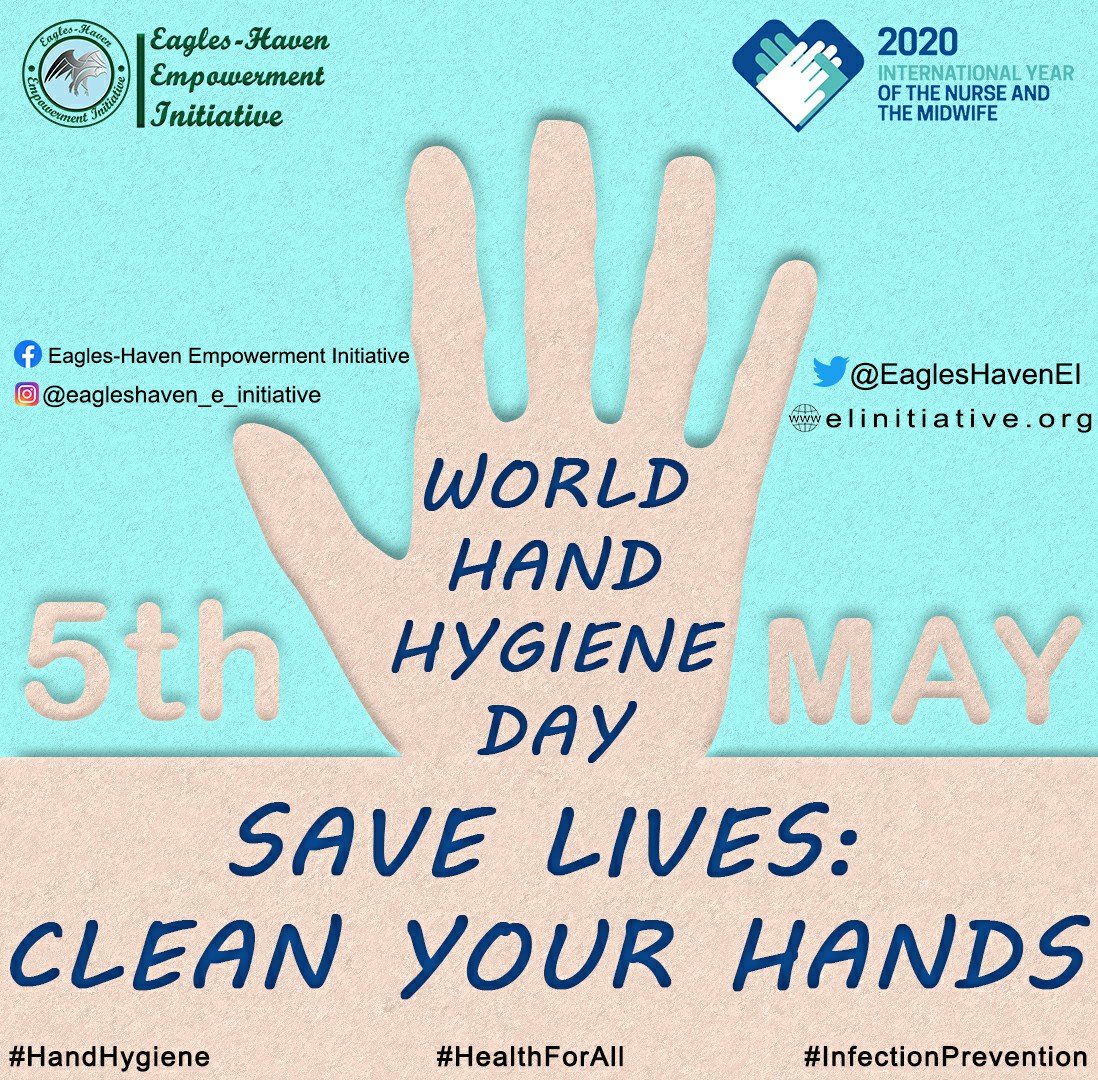World Hand Hygiene Day
Theme:
SAVE LIVES: Clean Your Hands
As 2020 is the international year of the Nurse and the Midwife, we remind them this world hand hygiene day that clean care is in their hands. Clean health care is among the most urgent challenges identified by the United Nations to be tackled in the next 10 years by the global community, in our race to meeting Sustainable Development Goal (SDG) deadline.
Therefore, clean care, including hand hygiene best practices, and the central role played by nurses and midwives in achieving this, is the focus of this year’s 5 May campaign. The idea has been to partner with the Year of the Nurse and the Midwife that WHO has declared for 2020, and to recognize their crucial contribution to strengthening quality health systems.
5 May 2020 calls to action:
-Nurses: “Clean and safe care starts with you."
-Midwives: “Your hands make all the difference for mothers and babies.”
-Policy Makers: "Increase nurse staffing levels to prevent infections and improve quality of care. Create the means to empower nurses and midwives.”
-Infection Prevention and Control (IPC) Leaders: "Empower nurses and midwives in providing clean care."
-Patients and Families: "Safer care for you, with you."
In the lead up to this year's World Hand Hygiene Day, countries around the world are in the throes of responding to the COVID-19 pandemic which we have learned that one of the major preventive measures is proper hand hygiene.
Hand hygiene involves the use of alcohol-based hand rubs and hand washing with soap and running water.
Hand Hygiene Indications (Why, How and When?):
Why?
Harmful bacteria and viruses can be transferred to food and others by people, animals or equipment. The main pathways for the transmission of germs during day-to-day activities are the hands. Therefore, hand hygiene is the most vital measure for keeping pathogens from being transmitted to others.
How?
Cleaning the hands, either by washing with soap and warm water or by rubbing them with Alcohol-Based Hand Rubs (ABHR) is essential. The use of a moistened towelette is also acceptable when hands are visibly soiled and there isn’t soap and water within reach. It is used to clean the hands after which hands are rubbed with an ABHR.
When?
Wash hands with plain soap and warm water when they are obviously soiled or after using the toilet. This is because organic matter inhibits the action of alcohol. The hand rub cannot release and rinse away dirt as soap and water can.
- Before touching a sick person
-After touching a sick person
- After contact with body fluids, discharges, mucous membranes or wounds
-After using the toilet.
-Before and after preparing food.
-Before eating food.
-Before handling medication.
-After touching animals.
-After sneezing or coughing.
-After touching garbage
Barriers to effective hand hygiene:
-Lack of knowledge of guidelines
-Low regard for hand hygiene value
-Long and artificial nails
-Hand ornaments or adornments
-Irritant hand products
-Lack of sinks and hand rub dispensers at strategic positions
-Lack of soap and paper towels at the sink
-Lack of running water and good sewage systems
-Broken sink/dispenser
-Lack of hand rub in the dispenser
#CleanHands








